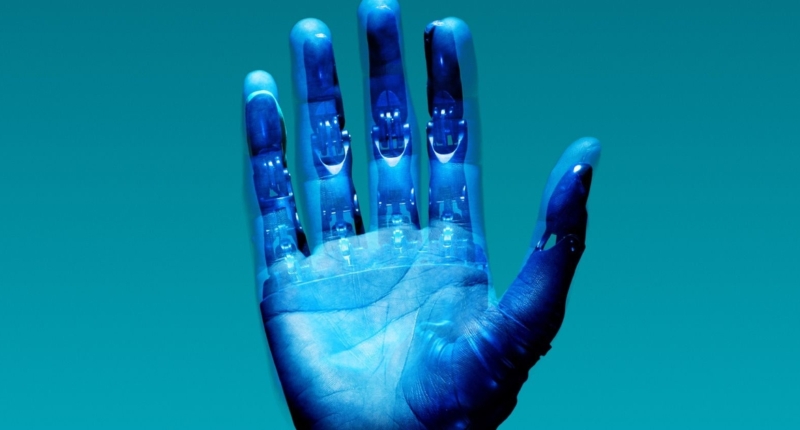Implantable technology is advancing at an incredible pace, with the potential to revolutionize healthcare. Examples of implantable technology include pacemakers, cochlear implants, and the OSSUR i-limb prosthetic hand. Implantable sensors can monitor blood sugar levels in people with diabetes and deliver relief from chronic pain by stimulating the spinal cord with electrical pulses. Implantable nanobots could offer targeted drug delivery, repair damaged tissues, detect and destroy cancer cells. However, ethical concerns must be addressed, such as the potential for unequal access to the technology and the long-term impact of implantable devices on the human body. Researchers, policymakers, and healthcare professionals must work together to ensure that implantable technology is used safely and equitably. Overall, the future of implantable technology is promising and has enormous potential to change the lives of those who can access it.
The Future of Implantable Wearables in Health and Wellness
The world of wearables has grown at an unprecedented pace, but what is the next step in human-computer integration? Enter implantable technology. By monitoring our health and wellness from the inside, implantable devices could revolutionize the way we approach healthcare.
Implantable Technology: A Brief Overview
Implantable technology isn’t new; pacemakers have been saving lives since the 1950s by regulating the heartbeat of people with heart problems. Cochlear implants, another example, have been life-changing for people with severe hearing loss, helping them hear more clearly and enjoy activities that were once impossible. These devices improve people’s lives by giving them a chance to live normally.
The Next Big Thing
Implantable wearables are the next big thing in healthcare. Tech companies are developing devices that will be implanted in our bodies to monitor our health and wellness. The devices will be able to track our vital signs and detect potential health issues before they become serious problems.
The Benefits of Implantable Wearables
Implantable wearables will offer many benefits. They will be able to detect and treat medical conditions more effectively, provide personalized medical care, and help people manage chronic diseases. Moreover, they will help people live more comfortable and happier lives.
The i-limb Prosthetic Hand
The i-limb Prosthetic Hand is a myoelectric prosthetic that uses small sensors placed on your residual limb to detect muscle movements. These signals are transmitted to the prosthetic hand, which can perform a wide range of natural movements such as gripping, pinching, and pointing. It offers a significant improvement over traditional prosthetics, providing greater flexibility and better performance.
Conclusion
Implantable technology is the future of healthcare. It will provide more personalized care, improve medical outcomes, and help people manage chronic diseases more effectively. The i-limb Prosthetic Hand is an excellent example of the possibilities of implantable wearables. With implantable wearables, people can live more comfortably, confidently, and happily.
The Future of Implantable Sensors and Robotics in Healthcare
Technology is advancing at an unprecedented pace, and implantable devices are taking things to the next level. From advanced skin patches to tooth-mounted sensors and even biosensors tattooed under the skin, these devices can track a wider range of health indicators more accurately than ever before. They can monitor blood pressure, oxygen levels, temperature, and hydration, as well as glucose, salt, and alcohol consumption.
Implantable Sensors: The Next Step in Healthcare
Implantable sensors offer significant advantages over traditional wearables. They are more accurate and can provide more information about various dimensions of your health. While smartwatch sensors such as Samsung’s BioActive sensor have made significant progress, implantable sensors take things to the next level.
MIT has been experimenting with biosensors that can be tattooed under your skin to quantify the concentration of certain substances in your body. Such sensors can track a wide range of health indicators more accurately, making them valuable for research purposes as well.
Cutting-Edge Research
Neuralink, a brain-computer interface startup founded by Elon Musk, is conducting cutting-edge research on implantable technology. Their brain-computer interfaces will soon allow for direct communication between the brain and digital devices, opening up a world of possibilities for people with disabilities and neurological conditions.
Spinal cord stimulation is another exciting area of implantable technology that has the potential to transform pain management. Abbott’s Proclaim SCS System is an implantable device that can provide relief from chronic pain by stimulating the spinal cord with electrical pulses, blocking pain signals to the brain.
Syncron, a brain implant startup backed by Jeff Bezos and Bill Gates, is developing brain implants that can help treat conditions like paralysis. The implants work by stimulating specific parts of the brain with electrical impulses that can help paralysis patients text, email, and shop online.
The Future of Implantable Robotics
Looking even further into the future, there are some incredibly innovative implantable technologies that could transform healthcare as we know it. One of the most exciting possibilities is the use of nanobots, tiny robots that could be injected into the body to perform targeted drug delivery, repair damaged tissues, and even detect and destroy cancer cells.
The i-limb Prosthetic Hand is an excellent example of the possibilities of implantable robotics. Controlled through an app on your smartphone, the i-limb can perform a wide range of natural movements, such as gripping, pinching, and pointing. It can be customized with different colors and designs, making it not only functional but also stylish.
Conclusion
Overall, the future of implantable technology is incredibly promising, and we can expect to see more breakthroughs in the years to come. Implantable sensors and robotics are already transforming healthcare, offering more accurate and personalized care. With innovative technologies such as nanobots and neural interfaces on the horizon, the possibilities for implantable technology in healthcare are truly exciting.
The Promising Future of Implantable Nanobots and Ethical Concerns
Implantable nanobots offer a promising future for healthcare. These tiny robots could seek out specific cells or tissues in the body, delivering drugs or repairing damage at the cellular level. This technology could be used to repair damaged nerve tissue in people with spinal cord injuries, potentially restoring lost motor function. Nanobots could also be used to detect and destroy cancer cells, potentially leading to a cure for the disease.
Real-time Health Monitoring
Implantable technology offers the ability to monitor and manage health conditions in real-time. For example, implantable sensors could be used to monitor blood sugar levels in people with diabetes, allowing for more precise and effective management of the disease, which is one of the most prevalent health conditions in the US.
Ethical Concerns
While the potential benefits of implantable technology are enormous, there are also ethical concerns associated with the technology. One concern is the potential for unequal access to the technology since these devices are likely to be expensive.
Another ethical concern is the long-term impact of implantable devices on the human body. While pacemakers have been used for decades with few reported problems, more invasive technologies such as brain-computer interfaces are yet to be seen on a larger scale. It will be important for researchers, policymakers, and healthcare professionals to work together to ensure that implantable devices are used safely and responsibly.
Conclusion
Implantable technology offers an exciting future for healthcare. With the potential to cure diseases and manage health conditions in real-time, these devices have enormous potential to change lives. However, there are also ethical concerns that need to be addressed, particularly around access and the long-term impact of these devices. It will be crucial for stakeholders to work together to ensure that implantable technology is used safely and equitably.
Don’t miss interesting posts on Famousbio










